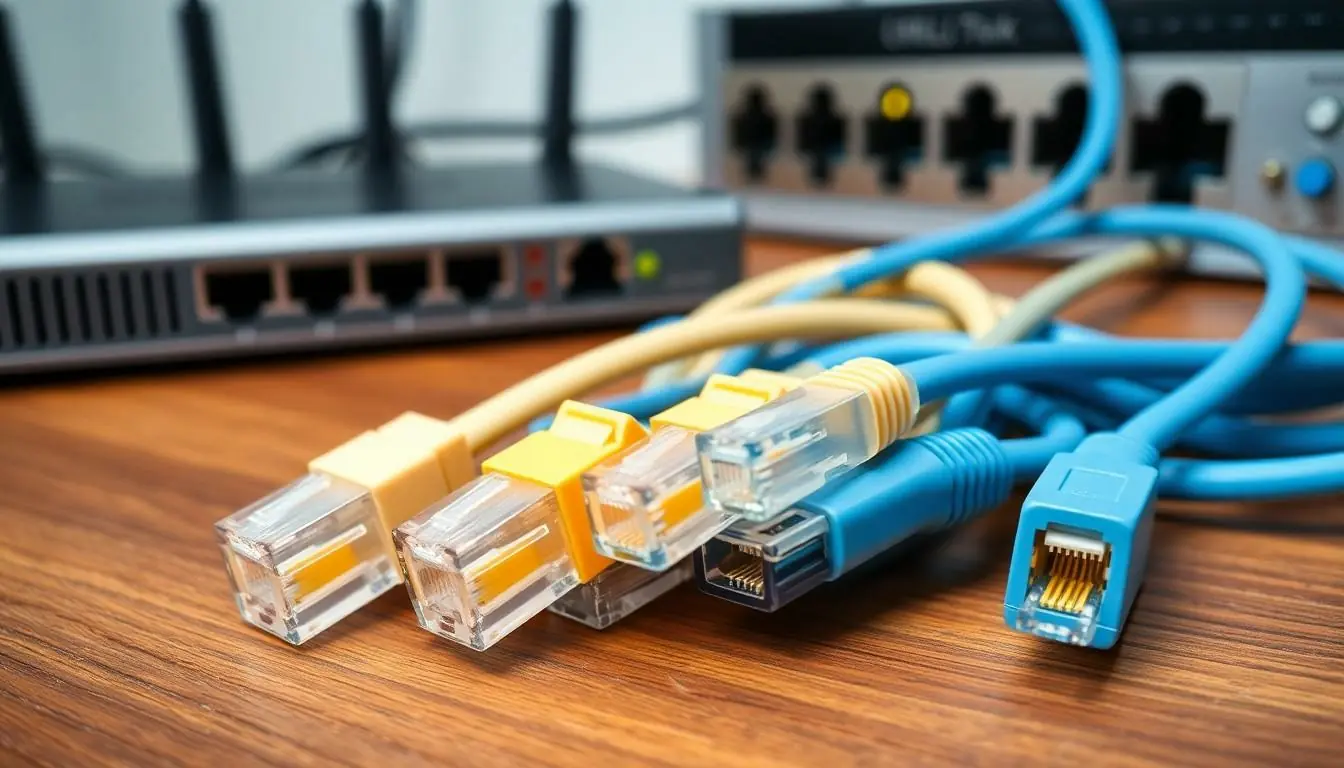In a world where Wi-Fi signals can be as fickle as a cat on a hot tin roof, a wired home network is the unsung hero of reliable connectivity. Imagine streaming your favorite shows without buffering or working from home without those dreaded dropouts. It’s time to embrace the magic of cables and create a wired home network that’s as dependable as your morning coffee.
A home networking wired diagram might sound like a techie’s secret code, but it’s really just a roadmap to a smoother digital life. With the right setup, he or she can connect multiple devices seamlessly, ensuring everyone in the household enjoys the internet without a hitch. Let’s dive into the nuts and bolts of creating a wired network that’ll have everyone wondering how they ever lived without it.
Table of Contents
ToggleUnderstanding Home Networking
Home networking encompasses the interconnection of devices within a residence for communication and resource sharing. Wired networks often provide superior stability compared to wireless systems. They support numerous devices and facilitate high-bandwidth activities efficiently.
Establishing a wired home network allows for seamless streaming, gaming, and remote work without disruptions. Devices such as computers, printers, and smart TVs connect through Ethernet cables. This setup minimizes latency, ensuring a reliable connection for all users.
A home networking wired diagram serves as an essential tool for visualizing the network layout. It illustrates the connections between devices and the central router or switch. Clear diagrams outline the placement of cables and devices, simplifying the installation process.
Switches play a crucial role in wired networks by connecting multiple devices within a network. They enhance performance and prevent bottlenecks by managing data traffic effectively. When selecting a switch, consider the number of devices that require connectivity and the desired speed.
Routers direct data traffic across the network. Choosing a router with strong capabilities ensures optimal performance for wired connections. Devices benefit from features such as Quality of Service (QoS), which prioritizes bandwidth for critical applications.
Ethernet cables vary in category, with Cat5e, Cat6, and Cat6a being common options. Each category denotes different performance standards, affecting speed and distance. Selecting the appropriate cable depends on the specific requirements of the network environment.
Overall, understanding the components and layout of a wired network enhances connectivity and ensures optimal performance. Homeowners can create a robust network that meets their digital demands.
Components of a Wired Home Network

A wired home network consists of several essential components that work collaboratively. Each part contributes to creating a reliable and efficient setup for digital activities.
Routers and Switches
Routers play a critical role in directing data traffic throughout a home network. They connect various devices to the internet and ensure optimal bandwidth distribution. Switches manage local data traffic between devices, allowing for increased connectivity with multiple ports. They help maintain network performance during heavy usage. Proper selection and positioning of routers and switches enhance overall efficiency and speed.
Cables and Connectors
Ethernet cables form the backbone of a wired network. Different types include Cat5e, Cat6, and Cat6a, each supporting varying speeds and bandwidth capacities. When selecting cables, consider the distance and required speed for your devices. Connectors also play a vital role in ensuring stable connections. RJ45 connectors are standard for Ethernet cables, ensuring compatibility and reliability in linking devices.
Creating a Wired Home Network Diagram
Creating an effective wired home network diagram involves careful planning and the right tools. A well-structured diagram acts as a blueprint, assisting in the seamless setup of a reliable network.
Planning Your Layout
Establishing an efficient layout ensures that all devices connect optimally. Identify each device that requires a wired connection, including computers, gaming consoles, and smart TVs. Consider the location of your router and switches, as proximity impacts signal strength. For best performance, place switches in central locations, facilitating equal cable lengths to devices. Visualizing the connections in advance aids in avoiding unnecessary complications during installation.
Visual Tools for Diagramming
Using visual tools simplifies the process of drafting a network diagram. Software like Lucidchart or Microsoft Visio provides user-friendly interfaces for creating detailed diagrams. Drag-and-drop features allow easy placement of network components such as routers, switches, and endpoints. Additionally, online templates can serve as starting points, helping to visualize layouts effectively. Organizing the diagram with clear labels and connections makes it easier to troubleshoot and maintain the network in the future.
Best Practices for Wired Home Networking
Effective wired home networking requires optimization and attention to security. Implementing best practices significantly enhances performance and safeguards the network.
Optimizing Speed and Performance
Choose the right Ethernet cables, such as Cat6 or Cat6a, for better speed and reduced interference. Position the router in a central location to ensure optimal connectivity throughout the home. Consider using a managed switch to control data traffic and prioritize bandwidth for devices like gaming consoles or streaming devices. Regularly update firmware for routers and switches to maintain performance and address vulnerabilities. Monitor network performance to identify bottlenecks and adjust configurations accordingly.
Security Considerations
Utilize strong passwords for network devices to deter unauthorized access. Implement network segmentation to isolate critical devices from less secure ones, enhancing overall security. Regularly update firmware for all devices to protect against security threats. Disable remote management unless necessary, reducing potential vulnerabilities. Consider enabling firewall features on routers for additional protection against external attacks. Use MAC address filtering to restrict which devices can connect to the network, providing an extra layer of security.
Establishing a wired home network offers significant advantages in stability and performance. By utilizing a well-structured diagram as a guide, users can effectively plan their network layout to optimize connectivity. The careful selection of components like routers and switches is crucial for ensuring seamless communication between devices.
Incorporating high-quality Ethernet cables and following best practices for security and maintenance can further enhance the network’s reliability. Overall, a wired home network not only supports demanding activities like gaming and streaming but also provides a robust foundation for a connected home. With the right setup, users can enjoy a superior digital experience that meets their needs.




